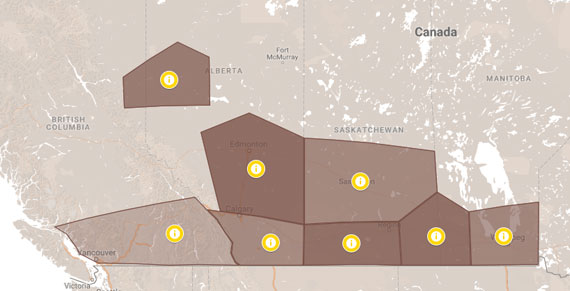Trace COMPLETE

Trace Complete pairs unmatched soil analysis with hi-definition genomic sequencing to deliver pathogen and nutrient insights that drive agronomic action in 7 key decision areas to help you make meaningful management decisions.
Looking to get started with Trace COMPLETE? Fill out the form here: TRACE GENOMICS NEW CUSTOMER
[embed]https://youtu.be/QMvCJortOSg?si=t2B8RT__rUAAoaZq[/embed]
A TOTAL SOLUTION FOR UNDERSTANDING AND MANAGING SOIL HEALTH

What is included:
Seed Solution Guide- Seed Selection, Seed Treatment, In-Season Disease Management
The Seed Solution Guide provides a comprehensive analysis of your soil that includes recommendations for seed selection and treatment depending on pathogen abundance and chemistry.
TracePHOS™ - Phosphorus Fertilizers, Phosphorus Liberating Agents, Biologicals
Delivers soil diagnostics so you can make the best phosphorus management decisions to optimize your soil biology performance and phosphorus use efficiency. With TracePHOS, you can identify areas where your crop would benefit from a biofertilizer or a phosphorus-liberating agent, and determine whether you should build soil phosphorus levels or re-allocate your input resources.
TraceN™ - Nitrogen Stabilizers
Delivers soil diagnostics so you can make the best nitrogen management decisions to optimize your soil biology performance and nitrogen use efficiency. With TraceN, you can identify areas where a nitrogen stabilizer or biofertilizer is desirable based on our unique nitrogen biological indicators.
Learn More
Seed Solution Guide
We’ve taken the guesswork out of seed and seed treatment selection with the ultimate agronomic tool. Our new Seed Solution Guide pairs unmatched soil analysis with hi-definition genomic sequencing to provide accurate, actionable information about relevant pathogen levels and key chemistry parameters in your fields.

With the Trace Seed Solution Guide, You Can:
Make Smarter Decisions
With easy-to-understand, customized data, you can make informed recommendations and decisions about seed selection, seed treatment and disease management based on your field’s specific pathogen levels and chemical characteristics.
Customize Crops
The Seed Solution Guide is the first configurable report from Trace Genomics. You can choose up to 6 crop types from more than 70 options—the default crops are corn and soybeans, but you can go beyond those to include all of the relevant crops for your operation.
Call It What You Like
Providing insights on permanent crops or others where seed selection might not be the main goal? Agronomists can customize the report name based on their growers’ needs.
If you’re a current Trace user, you can edit your report settings (including the name and the crop selections) by logging into your account. Hover over your initials in the bottom left corner of the window, then select “Profile,” then select “Report Configurations.”
Trace Phos

Trace N
Delivers soil diagnostics so you can make the best nitrogen management decisions to optimize your soil biology performance and nitrogen use efficiency. With TraceN, you can identify areas where a nitrogen stabilizer or biofertilizer is desirable based on our unique nitrogen biological indicators.

Quantifying regenerative farming practices with true Sustainable Soil Performance (SSP) ratings.
Identifying optimal product placement and higher win rate opportunities.
Providing unmatched soil analysis with industry-leading metagenomics sequencing.

